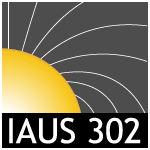Over the past decade, significant investigations have been made through the use of spectropolarimetry to probe the surface magnetic field characteristics of young higher-mass (M > 1.5 M_sun) stars from pre-main sequence to zero-age main sequence evolutionary phases. The results of these observational campaigns suggest that these young massive stars host similar magnetic properties to their main sequence descendants - strong, stable, globally-ordered fields that are detected in approximately 10 percent of all stars. This strongly contrasts with lower-mass stars, where it is generally accepted that a solar-like dynamo is in operation that generates more complex, globally-weak fields that are ubiquitous among these stars. The consensus is magnetic fields in higher-mass stars are fossil remnants of a magnetic field present in the molecular cloud, or generated very early during stellar formation. In this talk I will review the spectropolarimetric observations of higher-mass stars and discuss how these observations have guided our current understanding of the magnetic characteristics of young higher-mass stars.
|
|
|
|
Monday
26
Session 1 - Magnetized stellar formation
Chair: Corinne Charbonnel › 15:05 - 15:35 (30min) Magnetic higher-mass stars in the early stages of their evolution
1 : European Southern Observatory
(ESO)
-
Website
Karl-Schwarzchild Str. 2 D-85748 Garching bei Munchen -
Germany
2 : Royal Military College of Canada
(RMC)
3 : Laboratoire d'études spatiales et d'instrumentation en astrophysique
(LESIA)
-
Website
* : Corresponding author
Observatoire de Paris
5, place Jules Janssen 92190 MEUDON -
France
|

 PDF version
PDF version
